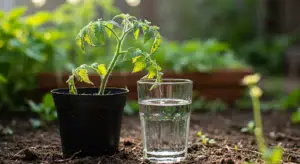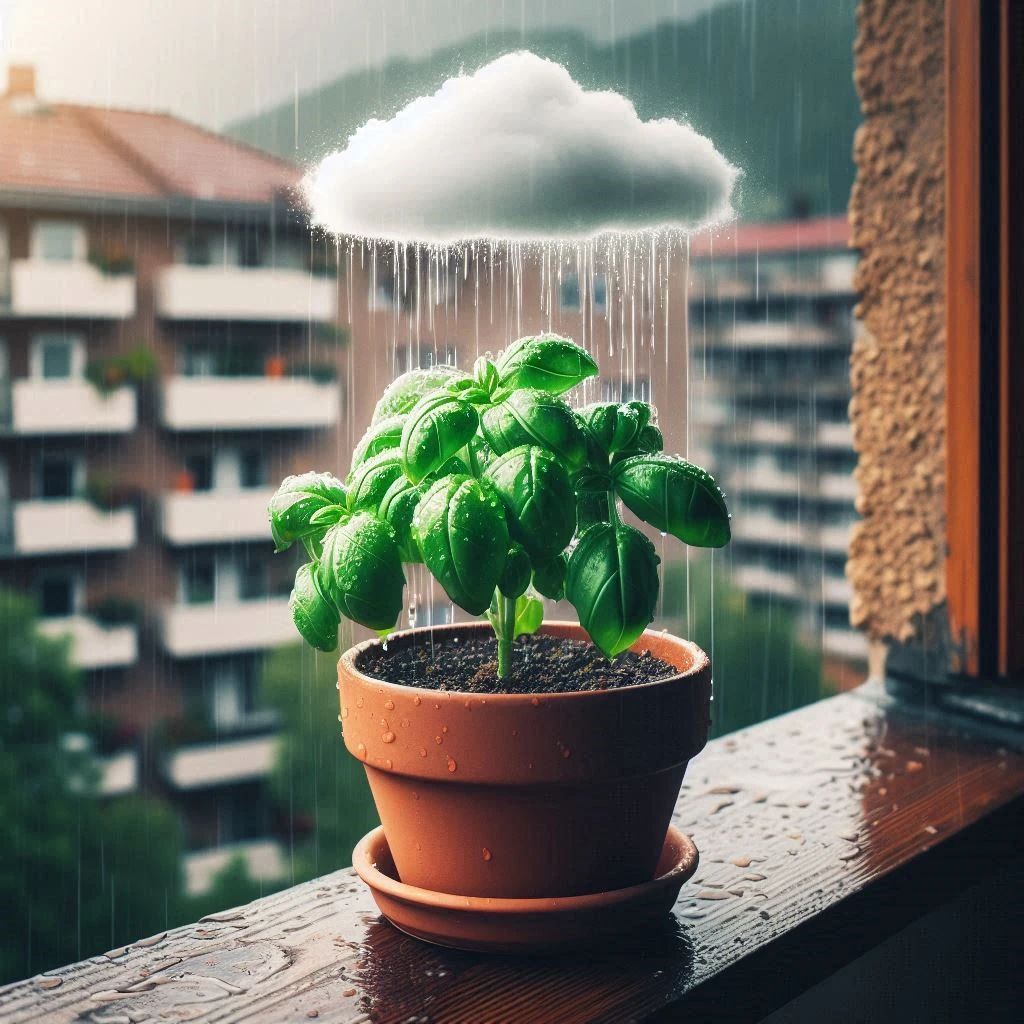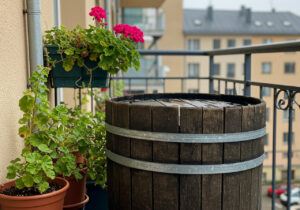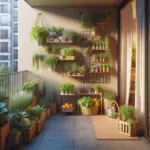Gardening in the urban environment comes with its fair share of challenges, especially when it comes to watering plants. Water access isn’t always a given in a city. You might not have a backyard spigot or rain barrels set up around your property. So, figuring out how to get that water to your plants is a must. You may need to use a community garden spigot or get creative with indoor sources to keep your plants healthy and hydrated.
Then there’s the urban heat island effect that messes with our plant care strategies. The temperatures are hotter in cities than in rural areas, pushing the need for more frequent watering, especially during summer months. It can’t stress enough how important it is to adjust your watering schedule based on your local urban heat patterns. It could mean the difference between a thriving plant and one that’s struggling to survive.
And then there’s Pollution, airborne contaminants in cities can make their way into the water supply, potentially affecting plant health. Using clean, filtered water whenever possible helps in warding off any negative impacts. It’s a simple step that can significantly boost your garden’s health in these environments. Keeping a rain barrel filled with fresh water can be a lifesaver too, especially when city water might not cut it.
Tailoring Watering Practices to Plant Types

Plants come with all sorts of different needs, and watering is one place they really show off their uniqueness. Succulents love going dry for a bit, but not your leafy greens? They’ll wilt and whine if left without water for long. Knowing your plant types and adjusting your watering schedule to match will really step up your gardening game.
For those in the city who are container gardeners, things can get a bit tricky. Containers dry out faster than soil in the ground because they’re more exposed to heat and wind. You might find yourself adjusting the watering frequency more often than not. Knowing the size of your container and the type of soil mix you’ve got in there could offer clues about how often to reach for your watering can.
Plant types don’t just dictate how often they need water, but how much, too. Herbs, for instance, prefer staying on the slightly dry side, making sure there’s room for air around those roots. Meanwhile, your flowering plants generally want a bit more moisture to keep those blooms looking fantastic.
Figuring out how much water your plant needs isn’t rocket science. A good tip is to poke a finger into the soil—if it feels dry a couple of inches down, it’s time for a drink. For those who prefer a more hands-off approach, or need a reminder, moisture meters can take away the guesswork.
Mastering Watering Techniques and Tools
When it comes to watering techniques, one size definitely doesn’t fit all, especially in urban settings. If you’re navigating tight spaces, drip irrigation systems can be a game-changer. They deliver water directly to the plant roots, cutting down on waste and promoting better plant health. Plus, they’re ideal in areas where access to outdoor water sources might be iffy.
For those who tend to forget about watering, self-watering planters are a lifesaver. They store excess water in a separate reservoir, ensuring your plants get a steady supply even when life gets hectic. This could mean the difference between lifeless plants and a flourishing urban jungle.
Rain barrels are another neat tool for the sustainability-minded. Collecting rainwater not only helps the environment but also offsets those rising water bills. You’ve got an eco-friendly system to tap into whenever you’re ready, especially useful in areas where water access isn’t straightforward.
Watering in the morning is classic advice for a reason. Early hours are cooler, leading to less evaporation and more hydration for thirsty plants. It’s a small timing tweak that can really make your watering routine work harder and smarter. Just be mindful of what your plants need—light, frequent watering isn’t for everyone, and some plants might prefer a good soak before another session.
Optimizing Soil and Mulch for Water Retention
In urban gardening, soil can be your best friend or your biggest hurdle. Quality potting mixes are worth every penny when it comes to maintaining the right moisture levels. A good mix keeps water around long enough for roots to soak it up without turning into a soggy mess. Don’t skimp on this. Your plants’ health depends on having the right foundation.
Adding organic matter like compost can work wonders for your soil’s structure and ability to retain water. It keeps the soil light and airy, which helps with drainage and nutrient uptake. Consider it as your garden’s multivitamin—keeping everything in balance.
Then there’s mulch, which is like putting a protective blanket over your soil. It helps reduce evaporation, meaning you won’t have to water as often, and it also keeps weeds at bay. For urban settings where heat can sap moisture in a flash, mulching can be the difference between looking lush or limp.
Getting the right balance with soil amendments can be a bit of an art. You don’t want to overdo it and drown your plants or let them dry out because the water rolled right off. Keep an eye on how your plants respond and adjust as you go. With some practice, you’ll have that perfect blend that keeps your urban garden thriving.
Weather Considerations and Climate Adaptation
Weather is always a wild card, especially with city gardening. City climates vary widely and getting a handle on how local weather patterns influence watering needs can help to boost your success rate.
In hotter areas, consider drought-tolerant plants. They cope better when water is in short supply and won’t suffer through those scorching urban afternoons. For cooler or shaded city areas, plants that don’t need constant sunlight or much water still thrive.
Switch gears when weather changes. If storms roll in, cut back on watering. The last thing you want is to drown your garden. Urban gardens sometimes don’t drain well, so ensuring there’s proper drainage saves your plants from the waterlogged fate.
Reading the weather forecast isn’t just for planning picnics. It helps you adjust your watering schedule, too. A hot streak might mean more frequent watering, while a cooler spell could let you ease up. Keeping tabs on forecasts can prepare you for potential challenges and prevent common hassles.
Choosing climate-appropriate plants for your city plot can make day-to-day care smoother. After all, aligning plant selection with your environment sets up your garden to not just survive but really shine.
Incorporating Technology and Conservation Practices
Smart tech can take urban gardening up a notch. Devices like moisture sensors give real-time feedback on soil conditions, helping you water only when necessary. It’s a practical way to ensure plants get just what they need without any extra work.
Automated watering systems are great if you’re juggling a busy schedule. They allow you to set and forget, ensuring plants stay hydrated with precision. You can even control some of these systems from your phone, practically babysitting your plants from anywhere.
Conserving water isn’t just eco-friendly; it’s smart gardening. Rainwater harvesting lets you collect natural water instead of dipping into the city supply. Combine this with greywater systems—water from sinks or showers (make sure it’s safe for non-edible plants)—and you’re set for sustainable urban gardening.
Water conservation matters more in a big city where natural resources are split among so many. Every drop saved is a step toward a healthier environment. Plus, using less makes life easier for your plants and your wallet.
Answering common questions can also clear up confusion. For instance, letting city water sit for 24 hours before using it on plants gives time for chemicals like chlorine to off-gas. To know a plant’s needs, watch for signs: wilted leaves might mean they need more, while yellow leaves can signal overwatering. Understand your plant’s natural cycles and remember, they often know best.





